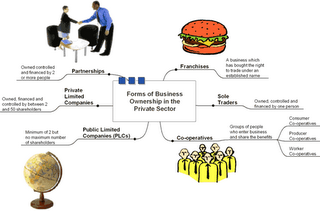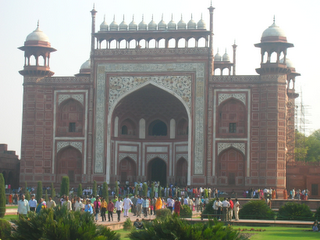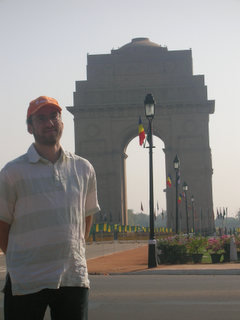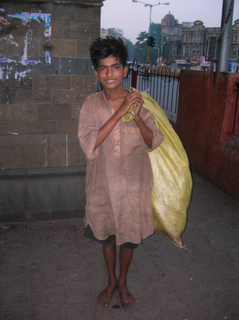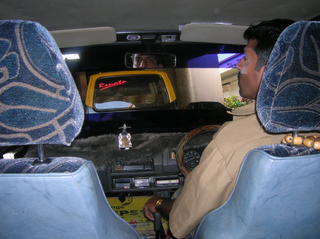
I've just finished the last bits of this book "The end of Poverty" from Jeffrey Sachs. It is an amazing read and it shows the hands-on experience of this professor, now Director of the Earth Institute.
The book explains how poorly understood the concept of poverty really is and even sometimes how much poorer are the understandings of the solutions to counter it. It talks mostly about government interventions as a necessary solution to combat extreme poverty, which is defined by the World Bank as those people living at less than US$1.08 per day (Purchasing Power Parity-adjusted).
I found a couple of arguments and statements very intriguing in this book. Also I had a look on wikipedia which I consider a source of general public opinion to compare the views of the book with what "the world believes".
If you read the text from the link:
Wikipedia Cycle of Poverty then you will notice that there is a lot of mumble about education, privatization and so-called "free-market solutions". The IMF and World Bank are not just subscribing policies to poor countries on what to do with these elements to alleviate poverty, but also maintain in many cases a political agenda.
As the book argues, the "extreme poverty" question has not much to do either with education, privatization, nor so much government corruption. It is on a lower, more basic level than that which is that the people do not find the ability in their country to save and therefore invest into a better future. This happens in Africa mostly due to a number of issues:
- 90% of malaria deaths occur in Africa (which can be treated, but the African mosquito really likes to bite humans rather than cattle, plus it is warmer, which intensifies the impact of malaria 3-4 fold).
- AIDS literally rages through Africa in Sub-saharan countries.
- The grounds on which they attempt to grow their crops are totally depleted of nutrients.
- Lack of infrastructure
- External trade-barriers
For some more background on the above, check out Wikipedia again:
Poverty diseases,
Global Distribution of Poverty,
Child Malnutrition (measure for hunger)There is actually an interview with Mr. Sachs about his book
over here. It explains better the reasoning that the book is trying to make clear.
Many people naturally assume that poverty is 100% about corrupt governments, an idea that if governments and public institutions work perfectly, wealth generation happens naturally and economic growth results. The book has shown me that this is not necessarily the case.
In some communities in Africa, the people need all the food they grow for themselves, so lack any savings / investment basis to allow them to grow further. Plus that the impact of diseases, lack of education for women and population growth every time undercuts any possible growth that could have occurred.
Since there is generally quite a lot of inflation in these countries and the government coffers never fill up, but instead service foreign debt, the country just turns poorer and poorer, without the ability even for the country to invest in national infrastructure. One African country's funding (relief) was US$100 million against the servicing of debt of US$600 million. So more money flows out than comes in. The actual need for foreign aid for that country stood at US$1.5 billion.
Figures also show that even in countries where corruption is abundant (corruption perception rank standard), there is still consistent economic growth. Countries like Bangladesh and Indonesia for example suffer from enormous corruption levels, but still maintain 2.0-3.5% economic growth. India is growing at 3.5% and this has about half of the corruption in those other countries. (source:
Global Corruption Report 2006, look for "Table 11.1: Corruption Perceptions Index 2005")
This is not to say corruption is not a factor, but it is not a factor as strong as we commonly tend to believe. The key factor in reducing corruption is education, which is an instrument to create better jobs, more understanding and more people power to fight those corrupt powers (which in countries like Africa is unthinkable, since corruption is basically a system that can only be broken by a general level of trust and equality between the people). So, in this reasoning, poverty and corruption have a very strong impact on one another.
The statement of Sachs is very interesting. Whereas previously there is a silly debate on solving the wrong problems (that do not alleviate extreme poverty, but have marginal impact on economic growth and requires a certain maturity), there is now a shift towards a more understood debate on poverty. That every country has its own specific structural problems that lie at the root of poverty (against the convential and conservative wisdom of Thatcher and Reagan days), and that a program can be built for each country that helps to get it back on track. Still, this way, you cannot expect it to perform the same as another country, it will take literally years, 50 years at least in many cases, but at the moment the African countries are declining in health, education, economy and this gradual decline only worsens the situation more, which causes more and faster decline.
The level of expenditure that is currently given to alleviate poverty in Africa is not enough and needs to expand. The US has yearly spent $15 billion on extreme poverty relief, but US$450 billion on the war in Iraq for example, where the destructive effects of war only cause more poverty and hatred across the world.
This is looking at the problem from a macro-economic and governmental level. Are there innovative opportunities related to this problem? To monitor and allow the flow of relief funds the richer countries need 'peace of mind' that the funds are applied properly and do not disappear along the way, neither what is bought with those funds. Solving that problem is worth millions... Or what of the agricultural technology opportunities to enrichen the soil for better crop planting? Using available technologies to allow communications to take place for a better-working market (where there is agricultural trade). Off-grid generators for providing electricity in housing (for late-night studying) that maybe could power a single low-cost computers or DVD-player (for health education for women, birth control, counter diseases at the community level, etc.)
 Happy new year to all. The new year is starting off again with new promises, new resolutions, new business, new projects. I wish everybody well in the coming year and hope that they will get closer to the realization of their dreams.
Happy new year to all. The new year is starting off again with new promises, new resolutions, new business, new projects. I wish everybody well in the coming year and hope that they will get closer to the realization of their dreams.

